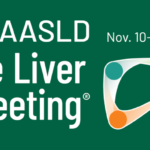Editor's Note:
From November 10th to 14th, the annual highlight of hepatology, the American Association for the Study of Liver Diseases (AASLD) 2023, was grandly held in Boston, USA. With over 200 abstracts from Chinese experts and scholars selected for oral presentations or poster sessions, the achievements were commendable. Congratulations to all! Dr. Fengmin Lu's team from Peking University has three contributions to this event (1 oral presentation and 2 posters). Today, we'll share insights from one of the posters presented on the first day, November 10th, revealing the team's academic prowess. The research discovered that the A1762T/G1764A mutation, by affecting the HBV transcriptome, can promote HBV replication (Abstract Number: 1514-C).
Chronic HBV infection remains a significant global public health issue. The A1762T/G1764A mutation,located in the HBV basic core promoter (BCP) region, is one of the most common mutations found in chronic hepatitis B patients and is associated with the progression of chronic HBV infection. However, there is still controversy regarding the impact of this mutation on HBV replication. Dr. Fengmin Lu’s research team systematically investigated the effects of the A1762T/G1764A mutation on HBV replication and explored its potential mechanisms.
To study the impact of the A1762T/G1764A mutation on HBV virus replication, researchers used the prcccDNA/pCMV-Cre recombinant plasmid system, constructed the prcccDNA-A1762T/G1764A mutant plasmid, and transfected it into Huh-7 or HepG2 cells, followed by hydrodynamic injection. They employed chemiluminescent assay kits to quantify HBsAg or HBeAg, qPCR, Western blot, Southern blot, and Northern blot to assess the impact of the A1762T/G1764A mutation on HBV replication.
By utilizing 5′-RACE analysis and full-length transcriptome sequencing, researchers analyzed the impact of the A1762T/G1764A mutation on HBV transcripts. Using dual luciferase reporter gene assays, they examined the effect of the mutation on the transcriptional activity of the P protein. Additionally, ChIP-qPCR was conducted to explore the transcription factors mediating the promotion of virus replication by the A1762T/G1764A mutation.
Results showed that compared to the wild-type group, the A1762T/G1764A mutation could promote HBV replication both in vitro and in vivo, inhibiting HBeAg production. Southern Blot and Northern Blot also indicated a significant increase in intracellular HBV rcDNA, replication intermediates, dslDNA, and intracellular HBV 3.5 kb RNA levels. RT-qPCR and 5′-RACE results revealed that the A1762T/G1764A mutation upregulated pgRNA transcription while downregulating preC RNA transcription, confirming the full-length transcriptome sequencing results.
Moreover, the A1762T/G1764A mutation also upregulated some sub-pgRNAs with the potential to express HBV polymerase. Further ChIP-qPCR analysis showed that the A1762T/G1764A mutation generated a functional HNF1α binding site in the BCP region, and overexpression of HNF1α enhanced the impact of the A1762T/G1764A mutation on HBV.
This research indicates that the A1762T/G1764A mutation selectively regulates the transcription of preC RNA, pgRNA, and sub-pgRNA, suggesting its potential as an indicator for treating CHB patients. HNF1α is expected to be a novel target for curing HBV infection.
Researchers’ Comments:
The high-frequency mutation of A1762T/G1764A in patients with chronic hepatitis B has been observed early on. In this study, using advanced long sequencing techniques, we delved into how A1762T/G1764A affects HBV transcription. We confirmed that A1762T/G1764A not only selectively enhances pgRNA transcription but also inhibits preC mRNA transcription. More importantly, we discovered for the first time that A1762T/G1764A can increase the transcription levels of sub-pgRNAs, providing a new perspective on how it enhances HBV replication. Furthermore, our research revealed the specific impact of A1762T/G1764A on the binding of HNF1α and HNF4α in the BCP region, offering a new direction for a deeper understanding of HBV-related mechanisms and the development of new drug strategies.

▲ The research findings presented at this conference have been formally published in the Journal of Medical Virology.

